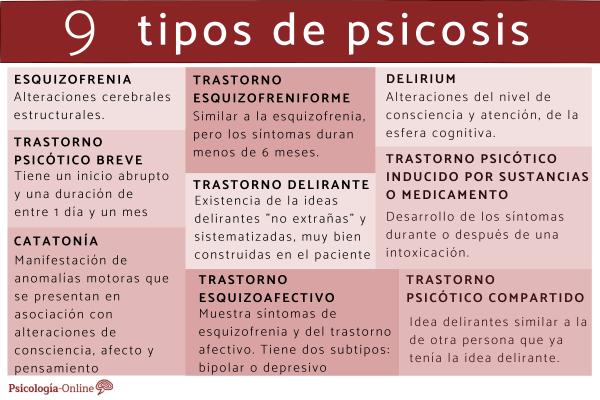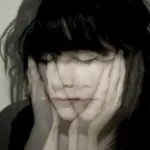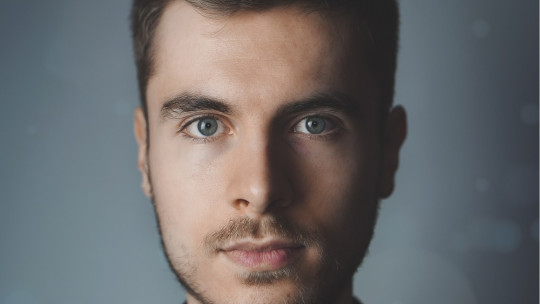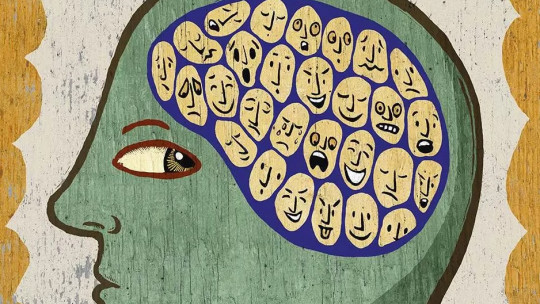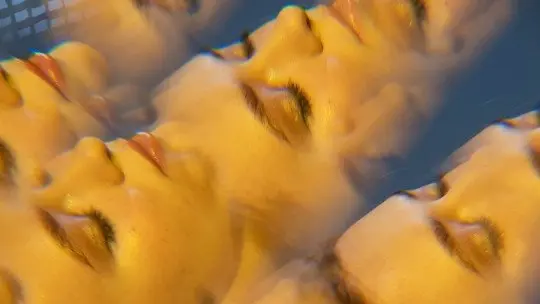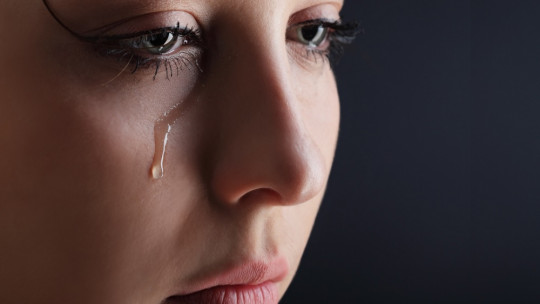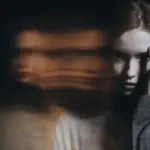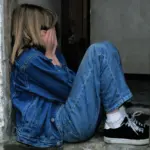“You’re crazy!” A very common phrase in the vocabulary of our society and that has generally negative connotations. Luckily, this expression is becoming less used, or at least, we are all more aware of the implications of saying this to someone and the importance of not stigmatizing people.
But how does a person with psychosis act? The symptoms of some mental health disorders are delusional ideas, disorganized speech, and strange behavior. All of these alterations, historically linked to madness, are called psychotic spectrum disorders. In this PsychologyFor article, we will show you the 9 types of psychosis most relevant, with their respective symptoms and treatments. So if you’re interested, keep reading!
Schizophrenia
Schizophrenia does not have a single clinical picture, but rather there are multiple characteristic and diversified symptoms between emotions, personality, cognition and motor activity. Specifically, it is a multisystem disease in which we can also observe brain alterations at a structural level.
If you were wondering what the most common psychosis is, perhaps this type is one of the most studied and popularly known psychotic disorders to date. Next, the classic symptoms of psychosis.
Classifications of schizophrenia symptoms
Some authors distinguish that two large groups of symptoms can appear in people with schizophrenia:
- Positive symptoms : everything that appears again since having the disease, distortions or exaggerations of normal functions. Among them, we can find hallucinations, delusional ideas, disorganized speech and strange behavior.
- Negative symptoms : the decrease in normal functions, that is, everything that the person has lost since the onset of the disease. We can find alogia, affective flattening, abulia or apathy and anhedonia.
Other authors classify symptoms in 3 dimensions:
- Psychotic symptoms : delusional ideas and hallucinations.
- Disorganized symptoms : disjointed language, disorganized behavior and inappropriate affectivity.
- Negative symptoms : poverty of language, avolition, anhedonia, emotional flattening.
Schizophrenia treatment
The treatment of schizophrenia is chronic, due to the nature of the disorder, and consists of two essential parts:
- Biological therapy : includes electroconvulsive therapy, increasingly out of use, and pharmacological therapy, with the administration of neuroleptics (antipsychotics) and anticholinergics to counteract the side effects resulting from antipsychotics.
- Psychosocial therapy : integrates social and psychological family therapy, social skills and self-help groups.
So a The ideal treatment would be one that integrates and works on the following aspects (Roder and Brenner, 2006(1)):
- Cognitive differentiation.
- Social perception.
- Verbal communication.
- Social skills.
- Resolution of interpersonal problems.
- Psychoeducation and family therapy.
- Social case management.
- Cognitive rehabilitation.
- Professional rehabilitation.
- Early detection and intervention.
Alternative treatments for schizophrenia
exist alternative treatments to conventional ones that have proven effective in treating schizophrenia if implemented together:
- Penicillin : decreases endotoxemia.
- Sleep cures : they allow you to increase slow wave sleep and reduce the energetic demands of the Central Nervous System (CNS).
- Hyperbaric oxygen chamber : a mega dose of oxygen.
- Carbon dioxide : through hypopressive exercises or breathing into a cardboard bag, as it promotes the elimination of glutamate and aspartate.
- Acetazolamide : a drug recognized for its effectiveness in cancer that, despite having some side effects, could be considered.
- Lithium : for its calming effect.
- Vitamins A, C, D and E.
- Aspirin for its anti-inflammatory effect.
- Thyroid hormones : increase energy availability and retain sodium and magnesium.
- sodium and magnesium : counteract potassium and calcium.

Schizophreniform disorder
Schizophreniform disorder presents same clinical picture as schizophrenia with the only difference that the symptoms are present for a period of less than 6 months. There is usually a return to premorbid functioning once the psychotic episode has resolved.
Symptoms of schizophreniform disorder
The main symptomatic manifestations of this type of psychosis are:
- Delusions.
- Hallucinations.
- Disorganization.
- Catatonia.
- Flattening.
- Apathy.
- Anhedonia.
- Cognitive impairment in attention, memory and executive functions.
- Affective symptoms: dysphoria, depression and autolysis.
- Behavioral alterations: socio-occupational, family and interpersonal dysfunction and loss of autonomy.
Treatment of schizophreniform disorder
As this is a shorter period of the presence of symptoms, the ttreatment is usually pharmacological and for a limited period of one year. If you want more information about what it is and how to treat it, we recommend this article on Schizophreniform Disorder: what it is, symptoms and treatment.
Brief psychotic disorder
One of the types of psychosis that has an abrupt onset and a duration between 1 day and one month. Once the psychotic break occurs, a return to the premorbid state of functioning is observed.
On the other hand, there is a prior vulnerability due to family history and there is a precipitating factor that is normally an external factor. In addition, brief psychotic disorder can present with emotional lability and extravagant behaviors, with the presence of 1 or more symptoms.
Symptoms of mild psychotic disorder
Main most common symptoms of mild psychotic disorder are:
- Delusional ideas.
- Hallucinations.
- Disorganized language.
- Catatonic or severely disorganized behavior.
Treatment of mild psychotic disorder
When a single psychotic episode appears, the most used treatment is administration of anxiolytics immediately, as well as an antipsychotic for one day when the crisis is detected.
In addition, it is also recommended to take vitamin supplements, control your diet, perform physical exercise, provide psychological care and psychoeducation about the event, and have follow-up by the medical teams in case the episode repeats itself or requires treatment. Psychological attention more personalized.
delusional disorder
Another type of psychosis is delusional disorder, which manifests itself mainly in the existence of delusional ideas. These are usually “non-strange” and systematized ideas very well built in the patient. Now, in delusional disorder it occurs in an absence of other psychotic symptoms present in schizophrenia, so treatment focuses on the appearance of hallucinations linked to the delusional theme.
Symptoms of delusional disorder
The presenting symptoms in cases of delusional disorder it is the following:
- Affective state in line with the delusional theme.
- Absence of illness judgment.
- Areas of functioning affected according to the content of the delirium.
- There is no significant deterioration in psychosocial activity.
Treatment of delusional disorder
The treatment of delusional disorder is very complex due to the irrationality of the central idea. Despite this, treatment is continued from cognitive-behavioral orientation through cognitive restructuring and confrontation.
The purpose is to increase the person’s capacity for rational judgment towards themselves and try to dismantle the construction they have made around the delusional idea. If necessary, especially if there are hallucinations, it will be treated pharmacologically with antipsychotics.
If you want more information about this type of psychosis, consult this article on Delusional Disorder: what it is, DSM V symptoms, treatment and how to act.
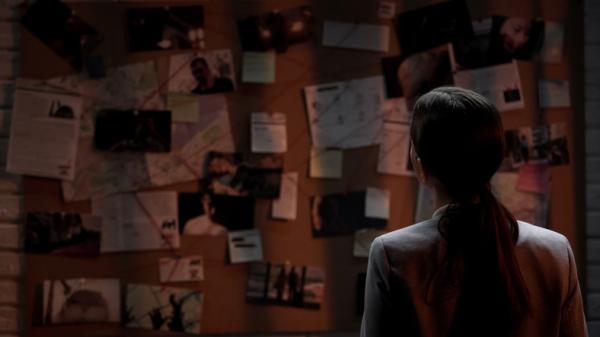
Schizoaffective disorder
Next on our list of types of psychosis is schizoaffective disorder, which shows schizophrenia symptoms and, in turn, also shows signs of an affective disorder. It should also be said that there can be two subtypes: bipolar or depressive.
Symptoms of schizoaffective disorder
Schizoaffective disorder is manifested by the following symptoms:
- Depressive or manic symptoms along with symptoms of schizophrenia.
- Delusional symptoms or hallucinations, in the absence of affective symptoms.
- Affective symptoms as an important component of the disease.
Treatment of schizoaffective disorder
The treatment to follow in this case will depend on the subtype of disorder schizoaffective disorder we are talking about, as well as the specific manifest symptoms. Thus, the treatment of schizophrenia will be followed, along with depressive or bipolar treatment if also necessary, at a pharmacological and psychological level. Likewise, it will not be strange that we find medication guidelines with antipsychotics and antidepressants.
In this article you will find more information about Schizoaffective Disorder: causes, symptoms, treatment and prognosis.
Catatonia
Catatonia is a neuropsychiatric syndrome characterized by manifestation of motor abnormalities that occur in association with alterations in consciousness, affect and thought. Furthermore, it is one of the types of psychosis in which there is an absence of will and mobility.
Symptoms of catatonia
To talk about catatonia, we will need to observe 3 or more characteristic signs , which may be associated with another mental disorder or may be due to another medical condition. Below we see the most common ones:
- Stupor.
- Catalepsy.
- Waxy flexibility.
- Mutism.
- Negativism.
- Adoption of a posture.
- Mannerism.
- Agitation not influenced by external stimuli.
- Silly faces.
- Echolalia.
- Echopraxia.
Catatonia treatment
The initial treatment of choice for catatonia is benzodiazepines and barbiturates , especially lorazepam in the first 48-72 hours orally and, if no response is observed, intravenously. In patients who do not respond to the use of lorazepam, electroconvulsive therapy has been indicated.
In the diagnosis of response to treatment, it is always good to intervene in the acute period However, the use of antipsychotics is contraindicated, since they usually worsen the prognosis. To learn more about this type of psychosis, consult our article on Catatonia: meaning, symptoms, causes and treatment.
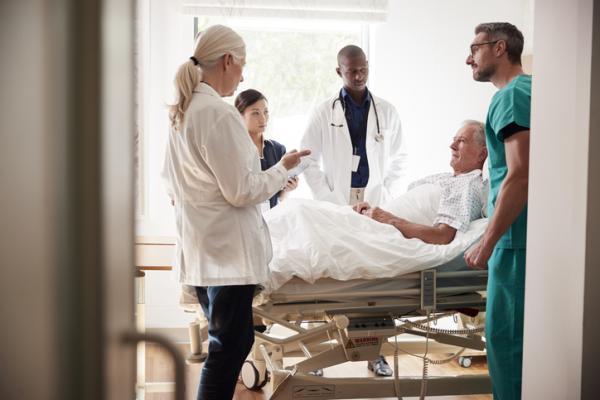
Substance- or medication-induced psychotic disorder
Among the types of psychosis, that induced by substances or medications, on the one hand, is characterized by the development of symptoms during or after poisoning , either in a state of withdrawal from the substance or after exposure to a medication. Thus, the drug has the capacity to produce some of the characteristic signs of this psychotic disorder.
On the other hand, to identify psychotic disorder induced by substances or medication 1 or more of the symptoms must be present common as hallucinations or delusions.
In these cases, unlike a psychotic disorder not induced by any substance, the treatment of psychotic disorder induced by substances or medication will consist of substance deprivation that has been the cause of the psychotic episode so that all the manifest symptoms subside.
Shared psychotic disorder
To know what type of disorder shared psychosis is, it is necessary to be clear that it is manifested by the development of a delusional idea in a subject in the context of a close relationship with other people who already had an established delusional idea.
This delusional idea is similar in content to that of another person I already had the delusional idea. Thus, the disturbance is not better explained by the presence of another psychotic disorder or a mood disorder with psychotic symptoms. Furthermore, it should be said that the establishment of the delusional idea is not due to the physiological effects of a substance or medical illness.
The symptoms of shared psychotic disorder include an affective state in line with the delusional theme, the absence of judgment of illness, and impairments in areas of functioning depending on the content of the delusion. In these cases, the treatment of this type of psychosis will be the same one we will follow in delusional disorder.

Delirium
In delirium, although hallucinations and delusions are common, a diagnosis apart from the psychotic disorder is not made due to another medical condition.
Symptoms of delirium
The main symptoms of delirium are the following:
- Alteration in the level of consciousness and attention that fluctuate over time.
- Alteration of the cognitive sphere.
- Perceptual alteration : visual hallucinations, usually.
- Alterations in the content of thought: delusional ideas of persecution.
- Alteration of the emotional sphere.
- Alteration at the motor level.
- Alteration of sleep-wake rhythms.
- Somatic signs and symptoms such as incontinence, hypertension, gait disorder, sweating, etc.
Delirium treatment
The symptoms of confusional syndrome or delirium are treated with antipsychotics by the doctor or psychiatrist. At the same time, the organic cause that caused it is treated and, if it has no treatment, palliative treatments are carried out.
Finally, it is worth mentioning that some diseases and even other mental disorders, such as depression or dementia, can present with some of the psychotic symptoms, as in cases of major depressive disorder with psychotic characteristics.
This article is merely informative, at PsychologyFor we do not have the power to make a diagnosis or recommend a treatment. We invite you to go to a psychologist to treat your particular case.
If you want to read more articles similar to Types of psychosis we recommend that you enter our Clinical Psychology category.
- Roder, V., Mueller, D.R., Mueser, K.T., & Brenner, H.D. (2006). Integrated psychological therapy (IPT) for schizophrenia: is it effective?. Schizophrenia bulletin, 32(suppl_1), S81-S93.
Bibliography
- American psychiatric association, (2014). Diagnostic and Statistical Manual of Mental Disorders DSM – 5. Madrid Spain. Pan-American medical publishing house.
- Belloch, A., Sandín, B., Ramos, F., (2009). Manual of psychopathology, volume II. Madrid. McGraw Hill / Interamericana de España, SAU
- Carlson, N. R. (2014). Behavioral physiology. Madrid. Pearson Education, S.A.
- Crespo, ML, & Pérez, V. (2005). Catatonia: a neuropsychiatric syndrome. Colombian Journal of Psychiatry, 3. 4(2), 251-266.

